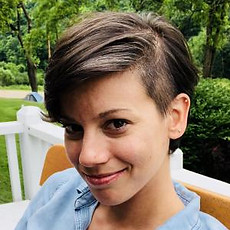

Photo by Mackenzie Best: Rio Grande at Golden Hour
The 6th Rocky Mountain
Geobiology Symposium
April 20, 2024
Fidel Ballrooms
New Mexico Institute of Mining and Technology, Socorro NM
Contact: rmgeobio2024@gmail.com








Photo by Mackenzie Best: San Marcial
Registration is open!
Registration closes Mar. 11th for presenters and for general attendance.
This is our final deadline extension!
To register, please fill out our Google form linked below.
When attaching your abstract please be mindful of the 300 max word count and the document type, MS Word only.
On the Agenda and Tentative Schedule
Friday Night Mixer
Join us for a welcome dinner and drinks the night before the conference.
Location: TBA
Time: 5:00-7:00pm
Check in and Breakfast
Come check in and grab some coffee and light breakfast!
Location: Mineral Science Engineering Complex (MSEC)
Time: 8:00-8:30 am
Presentations and Symposium
Time to show us your cool science! Oral speakers as well as poster sessions will take place.
Location: Fidel Ballrooms
Oral presentations: 9:00 am-12:00 pm
Lunch: 12:00-1:00 pm
Oral presentations: 1:00-3:00 pm
Poster sessions: 3:30-5:00 pm
Dinner Reception and Happy Hour
Come enjoy some dinner and drinks in the Bureau of Geology. You can also tour the mineral museum!
Location: Bureau of Geology
Time: 5:00-8:00pm
Meet the Keynote Speakers
Dr. Devan Nisson

Postdoctoral Researcher at Princeton University
Dr. Devan Nisson investigates the geochemistry and microbiology of deep subsurface brine systems. She has utilized aqueous geochemical modeling programs (including Geochemist’s Workbench) alongside water/rock isotopic measurement and mass-balance techniques to model brine formation history over geologic time, and how biotic vs abiotic (e.g. water-rock interaction) processes influence microbial habitability. Dr. Nisson completed a PhD in the Geosciences Department at Princeton University in 2023 (advisors: T.C. Onstott, Bess Ward) where she examined the influence of water radiolysis over Ga timescales on H2/oxidant production, brine salinity formation, and single cell genomics stress-response features in Moab Khotsong gold and uranium mine of the Witwatersrand Basin, South Africa. This work not only elucidates the limits of life in extreme environments of the terrestrial subsurface, but provides invaluable information regarding microbial habitability constraints in potentially similar planetary brine systems. Dr. Nisson is additionally a collaborating member of the Origin’s and Habitability Lab at the Jet Propulsion Laboratory in Pasadena, CA where she has worked with Dr. Scott Perl since 2020 to apply microbial maintenance energy models and brine formation models to putative planetary brine systems on Mars and beyond. Prior to her work at Princeton, Dr. Nisson completed her BS in Ecology and Evolutionary Biology from UC Irvine (advisor: Dr. Steven Allison) where she considered leaf-litter inhabiting microbial metabolic stress response to drought via extracellular enzyme degradation activities.
Dr. Magdalena Osburn

Associate Professor, Curriculum Chair, Seminar Director at Northwestern
Biological molecules record information about both their formation environment and the organisms that produce them. I use a class of molecules called lipids to study the habits of modern and ancient microbes. Lipids are found in the membranes of all organisms and their structures can be highly diagnostic of particular biological groups. Lipids are made primarily of C and H (also N, P, O, and S). As these atoms are incorporated into the lipid structure they preserve isotopic signals of both biological and environmental processes. The major advantage of lipids for geoscientists is that they can be preserved on very long timescales, and thus can archive information about past environments in sediments and rocks. My research applies tools from organic geochemistry, microbiology, and stratigraphy to investigate microbial and biogeochemical cycling in both modern and ancient environments.
A major ongoing portion of my research focuses on understanding what type of information is record by the hydrogen isotopic composition of lipids. We know that D/H reflects environmental water, but it can also vary with humidity, salinity, and, most importantly for my research, microbial metabolism. This work includes both in lab culturing experiments to expand the data base of isolate D/H, and field studies aimed at understanding the nuances of this technique in particular environments.
Dr. Morgan Raven

Associate Professor, UC Santa Barbara
Morgan is an organic geochemist and geobiologist. Since finishing her PhD at Caltech in 2016, she has been working as an Agouron Geobiology Fellow at Washington U. in St Louis. She joins the UC Santa Barbara Earth Science faculty in July 2018.
Morgan's research includes classic and emerging problems in biogeochemistry, ranging from the origins of life to modern and ancient climate change. A common thread shared by many of these questions is an under-studied role of organic sulfur. Her lab specializes in sulfur isotope analysis by multicollector inductively coupled plasma mass spectrometry (MC-ICP-MS), a powerful tool for measuring very small samples from a wide range of environments.
Getting to New Mexico Tech
New Mexico Tech address: 801 Leroy Pl, Socorro, NM 87801
Nearest airport: Albuquerque International Sunport,
2200 Sunport Blvd, Albuquerque, NM 87106
Shuttles will be available for transport from the airport to NMT!

Map of directions from ABQ Sunport to NMT in Socorro, NM. Take 76 miles south on I25.
Hotels in Socorro:
Holiday Inn Express Socorro, an IHG Hotel
1040 N California St, Socorro, NM 87801
Comfort Inn & Suites
1259 Frontage Rd, Socorro, NM 87801
Best Western Socorro Hotel & Suites
1100 N California St, Socorro, NM 87801

Map of New Mexico Tech. Buildings where events will take place are marked with stars. All parking on campus is FREE! Closest parking lots are marked in red.
Student Organizing Committee

Katelyn Green
katelyn.green@student.nmt.edu

Zoe Havlena
zoe.havlena@student.nmt.edu
_edited.jpg)
Mackenzie Best
mackenzie.best@student.nmt.edu
_edited.jpg)
Abigail Brown
abigail.brown@student.nmt.edu
_edited.jpg)
Calyssa Huff
calyssa.huff@student.nmt.edu
_edited.jpg)
Cassandra Skaar
cassandra.skaar@student.nmt.edu
_edited.jpg)
Joe Hoberg
joseph.hoberg@student.nmt.edu

Nathaniel Jobe
nathaniel.jobe@student.nmt.edu
Faculty Advisors

Thomas Kieft
thomas.kieft@nmt.edu

Daniel S Jones
daniel.s.jones@nmt.edu
